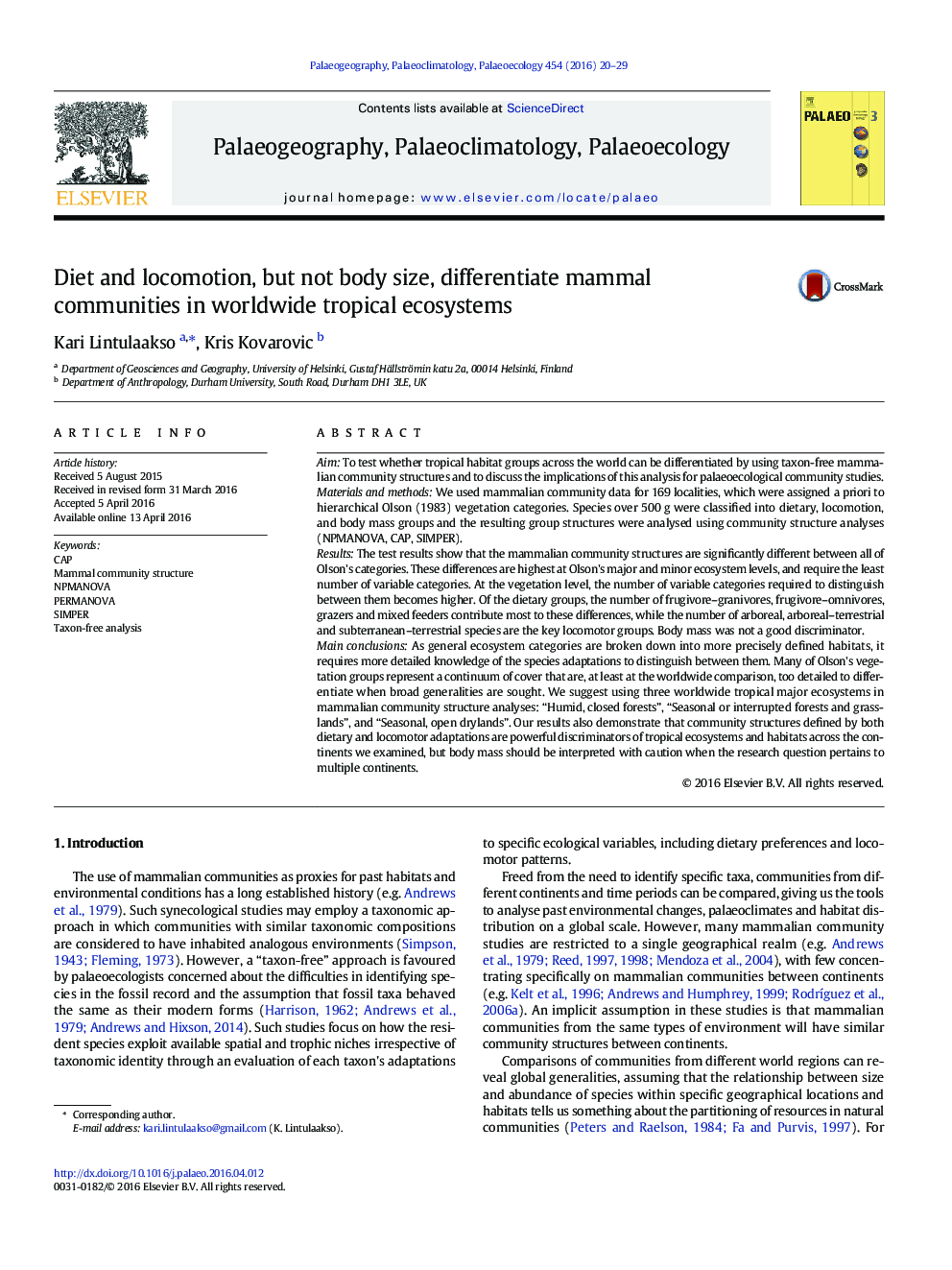| کد مقاله | کد نشریه | سال انتشار | مقاله انگلیسی | نسخه تمام متن |
|---|---|---|---|---|
| 4465594 | 1622137 | 2016 | 10 صفحه PDF | دانلود رایگان |
• Habitat groups can be identified on the basis of mammal community structure.
• Diet and locomotion are useful ecovariables, but body size is not.
• Frugivores, grazers, arboreal and subterranean–terrestrial species define group differences.
• Three major habitat clusters are clearly identifiable in all analyses.
• Palaeoecological reconstructions should incorporate these natural clusters.
AimTo test whether tropical habitat groups across the world can be differentiated by using taxon-free mammalian community structures and to discuss the implications of this analysis for palaeoecological community studies.Materials and methodsWe used mammalian community data for 169 localities, which were assigned a priori to hierarchical Olson (1983) vegetation categories. Species over 500 g were classified into dietary, locomotion, and body mass groups and the resulting group structures were analysed using community structure analyses (NPMANOVA, CAP, SIMPER).ResultsThe test results show that the mammalian community structures are significantly different between all of Olson's categories. These differences are highest at Olson's major and minor ecosystem levels, and require the least number of variable categories. At the vegetation level, the number of variable categories required to distinguish between them becomes higher. Of the dietary groups, the number of frugivore–granivores, frugivore–omnivores, grazers and mixed feeders contribute most to these differences, while the number of arboreal, arboreal–terrestrial and subterranean–terrestrial species are the key locomotor groups. Body mass was not a good discriminator.Main conclusionsAs general ecosystem categories are broken down into more precisely defined habitats, it requires more detailed knowledge of the species adaptations to distinguish between them. Many of Olson's vegetation groups represent a continuum of cover that are, at least at the worldwide comparison, too detailed to differentiate when broad generalities are sought. We suggest using three worldwide tropical major ecosystems in mammalian community structure analyses: “Humid, closed forests”, “Seasonal or interrupted forests and grasslands”, and “Seasonal, open drylands”. Our results also demonstrate that community structures defined by both dietary and locomotor adaptations are powerful discriminators of tropical ecosystems and habitats across the continents we examined, but body mass should be interpreted with caution when the research question pertains to multiple continents.
Journal: Palaeogeography, Palaeoclimatology, Palaeoecology - Volume 454, 15 July 2016, Pages 20–29
